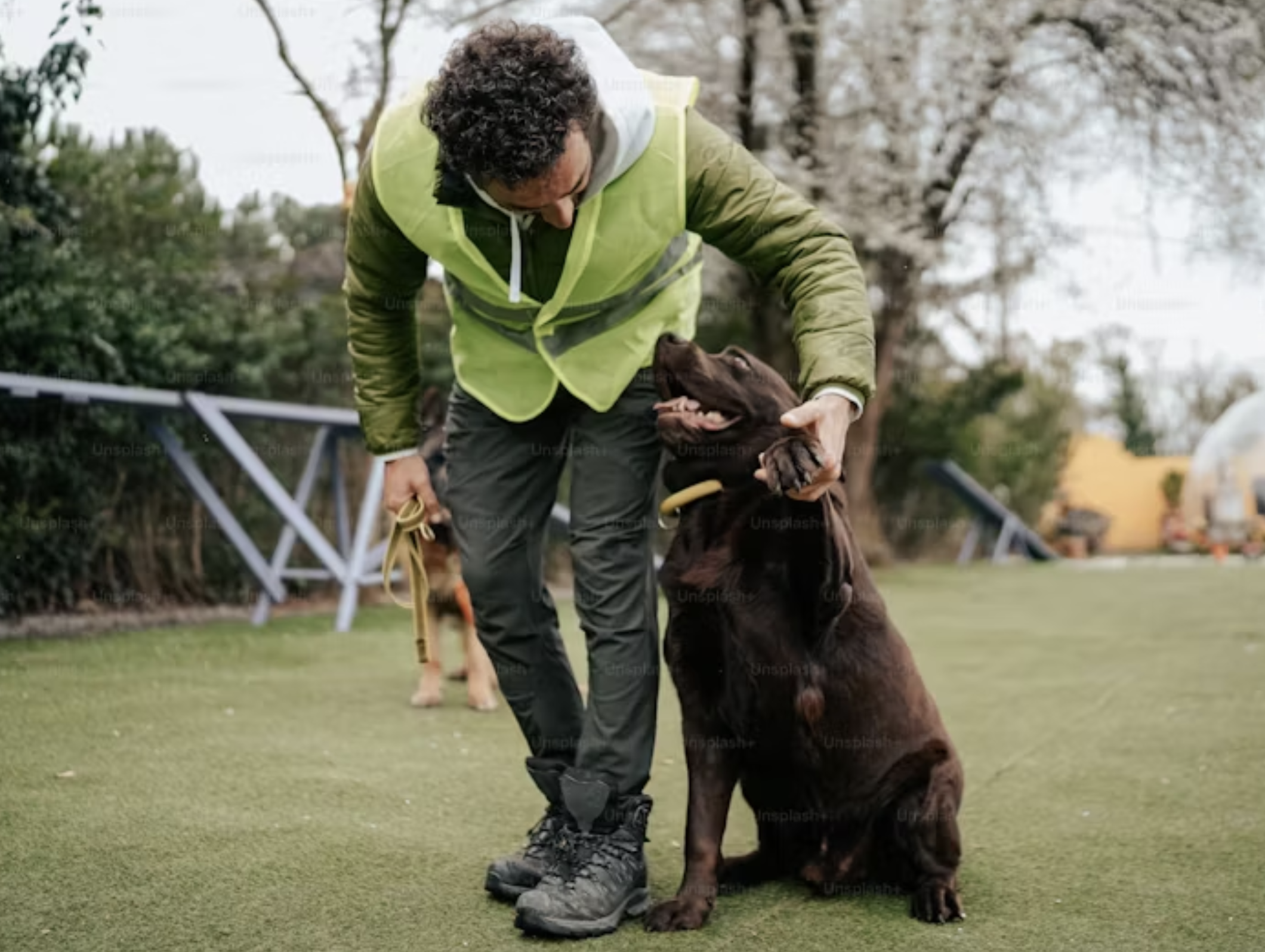- Understanding the Role and Types of Assistance Dogs
- Step 1 - Determine Your Eligibility for an Assistance Dog
- Step 2 - Researching Assistance Dog Organizations
- Step 3 - The Application Process for an Assistance Dog
- Step 4 - Training and Preparation
- Step 5 - Certification and Legal Considerations
- Financial Considerations and Support Options
- Exploring Self-Training as an Option
Assistance dogs are invaluable companions for individuals with disabilities, providing critical support that enhances independence and improves overall quality of life. These specially trained dogs help people with a range of physical, sensory, and mental health challenges navigate daily life with confidence and safety. For those considering an assistance dog, understanding the process is essential to ensure a smooth journey from application to training and beyond.
This guide will walk you through the step-by-step process of obtaining an assistance dog, covering eligibility requirements, application procedures, training, and financial considerations. Whether you’re looking for support with mobility, hearing, mental health, or other needs, this article will provide the essential information you need to make an informed decision about pursuing an assistance dog in the UK.
Understanding the Role and Types of Assistance Dogs
Assistance dogs provide tailored support to meet their handler’s specific needs, making it important to understand the different types of assistance dogs and the unique roles they play.
Types of Assistance Dogs
1. Guide Dogs: Designed for individuals with visual impairments, guide dogs help their handlers navigate safely and independently by avoiding obstacles, stopping at curbs, and finding specific destinations.
2. Hearing Dogs: Hearing dogs are trained to alert people who are deaf or hard of hearing to important sounds, such as doorbells, alarms, or someone calling their name. This enhances safety and awareness in various settings.
3. Mobility Assistance Dogs: For people with physical disabilities, mobility assistance dogs can help by retrieving items, opening doors, providing balance support, and assisting with other everyday tasks that increase independence.
4. Medical Alert Dogs: Trained to detect certain medical conditions, medical alert dogs can recognize changes in blood sugar levels (for diabetes), seizure onsets (for epilepsy), or other health emergencies, allowing their handlers to take preventive action.
5. Psychiatric Assistance Dogs: For those dealing with mental health challenges, psychiatric assistance dogs provide grounding support, interrupt anxiety attacks, and help manage symptoms of PTSD, autism, and other conditions.
Determining which type of assistance dog aligns with your unique needs is the first step. Think about the challenges you face daily, and consider how an assistance dog might address these needs. Different types of assistance dogs undergo specialized training, so matching your needs to the right category will help ensure a more effective partnership.
Step 1 - Determine Your Eligibility for an Assistance Dog
Basic Eligibility Criteria
To qualify for an assistance dog in the UK, individuals typically need a documented disability that significantly impacts their daily life. This might include:
• Physical disabilities that limit mobility
• Sensory impairments, such as hearing or vision loss
• Mental health conditions, such as PTSD or severe anxiety
• Medical conditions requiring alert, such as epilepsy or diabetes
Most assistance dog organizations will require proof of your disability as part of the application process.
Step 2 - Researching Assistance Dog Organizations
Several well-established organizations in the UK provide assistance dogs. Each organization may specialize in different types of assistance dogs, so it’s important to research and choose one that aligns with your specific needs. Here are a few to consider:
• Guide Dogs UK: Specializes in training guide dogs for visually impaired individuals.
• Hearing Dogs for Deaf People: Trains dogs to support individuals with hearing impairments.
• Canine Partners: Provides mobility assistance dogs for people with physical disabilities.
• Assistance Dogs UK: An umbrella organization for multiple assistance dog providers in the UK, offering resources and guidance across various needs.
Factors to Consider When Choosing an Organization
When selecting an organization, consider factors such as:
• The type of assistance dogs they train
• Their approach to matching dogs with handlers
• Waiting times and availability
• Costs and any financial aid options they may offer
It’s also helpful to read reviews or reach out to others who have worked with these organizations to gain insight into the experience.
Exploring Other Options
While many people go through established organizations, some choose to self-train an assistance dog. Self-training can be a more affordable alternative, allowing the handler to train a dog that is already part of their life or one they feel a particular connection with. However, self-training requires a significant commitment to learning and applying the principles of service dog training and maintaining high standards of behavior.
Service Dog Training School offers an excellent resource for individuals interested in self-training their assistance dogs. They provide flexible training programs that allow handlers to learn at their own pace, covering essential areas like obedience, task-specific training, and public access skills. Service Dog Training School offers both online and in-person courses designed to equip handlers with the skills needed to train their own assistance dogs effectively.
Advantages of Using Service Dog Training School’s Programs:
• Comprehensive Curriculum: Service Dog Training School’s programs cover all the essential aspects of assistance dog training, including behavior management, public access training, and specialized task training.
• Guidance and Support: Self-trainers receive guidance from experienced professionals, ensuring that each step aligns with service dog standards.
• Flexible Learning: Online courses make it convenient for handlers to train their dogs on their own schedule, allowing them to build a customized plan that fits their unique needs.
• Affordability: Self-training through a structured program is often more affordable than obtaining a fully trained assistance dog from an organization.
For those committed to self-training, enrolling in a program like those offered by Service Dog Training School provides the structure, guidance, and resources needed to meet the high standards required of assistance dogs. This option offers a practical alternative, empowering individuals to build a strong partnership with their service dog while customizing training to meet their specific needs.
Step 3 - The Application Process for an Assistance Dog
Initial Application
The application process generally begins with an initial form, which will ask for details about your disability, lifestyle, and specific needs. Some organizations may also request documentation from your doctor or mental health professional at this stage.
Interviews and Assessments
Once your application is reviewed, many organizations conduct interviews or assessments to evaluate whether an assistance dog is a good fit for your needs. These assessments may involve:
• Home visits to evaluate the environment
• In-person interviews to discuss how an assistance dog will integrate into your daily life
• Health assessments for physical readiness to care for an assistance dog
These steps help the organization understand your unique requirements and ensure a good match with a potential assistance dog.
Waiting Period
It’s common to encounter a waiting period, as assistance dog organizations have limited numbers of trained dogs and high demand. Waiting times can vary based on the organization, the type of assistance dog, and the availability of suitable dogs.
Step 4 - Training and Preparation
Understanding Training Requirements
Assistance dogs undergo rigorous training to learn obedience, task-specific skills, and public access etiquette. Training covers everything from basic commands to advanced tasks, ensuring the dog can provide consistent support in various settings.
Owner Training
Most organizations require the future handler to participate in training sessions with their dog. This owner training is essential for building a successful partnership and includes:
• Learning how to use commands effectively
• Practicing routines for public settings
• Understanding how to reinforce training over time
These sessions help you learn how to communicate with and care for your assistance dog, ensuring a smooth transition to daily life.
Public Access Training and Etiquette
Public access training prepares your assistance dog for behavior in public spaces. This includes:
• Staying calm and focused in busy environments
• Avoiding distractions like food or other animals
• Maintaining obedience and following cues
Assistance dogs must meet high standards of public conduct, which is essential for their role in supporting you in all environments.
Step 5 - Certification and Legal Considerations
Certification Options
In the UK, assistance dogs are not legally required to have certification, but some people choose to register their dogs through optional services for added convenience. Having identification, such as a service dog vest or ID card, can be helpful in public situations to establish the dog’s role.
Legal Rights and Access
Under the Equality Act 2010, assistance dogs are legally allowed to accompany their handlers in most public spaces, including stores, restaurants, and public transport. Familiarizing yourself with these rights helps you advocate for yourself and your assistance dog.
Ongoing Responsibilities of Handlers
As a handler, you are responsible for maintaining your assistance dog’s training, health, and behavior in public. Regular training and consistent reinforcement are essential to ensure that your dog remains effective and well-behaved.
Financial Considerations and Support Options
Understanding the Costs Involved
Obtaining an assistance dog can involve costs such as:
• Application fees or program fees, depending on the organization
• Training equipment and veterinary care
• Ongoing care, food, and insurance
Some organizations provide assistance dogs at little to no cost, but it’s wise to plan for the financial responsibilities that come with caring for a service dog.
Financial Assistance and Grants
For those concerned about costs, there are financial aid options, such as disability grants and charity support. Organizations like Assistance Dogs UK and Hearing Dogs for Deaf People may offer sponsorship programs to help cover expenses.
Insurance Options
Pet insurance is recommended to cover veterinary expenses. Assistance dogs are working animals, so choose an insurance plan that accommodates their needs and provides adequate coverage for potential emergencies.
Exploring Self-Training as an Option
While many people go through established organizations, some choose to self-train an assistance dog. Self-training can be a more affordable alternative, allowing the handler to train a dog that is already part of their life or one they feel a particular connection with. However, self-training requires a significant commitment to learning and applying the principles of service dog training and maintaining high standards of behavior.
Service Dog Training School offers an excellent resource for individuals interested in self-training their assistance dogs. They provide flexible training programs that allow handlers to learn at their own pace, covering essential areas like obedience, task-specific training, and public access skills. Service Dog Training School offers both online and in-person courses designed to equip handlers with the skills needed to train their own assistance dogs effectively.
Advantages of Using Service Dog Training School’s Programs:
• Comprehensive Curriculum: Service Dog Training School’s programs cover all the essential aspects of assistance dog training, including behavior management, public access training, and specialized task training.
• Guidance and Support: Self-trainers receive guidance from experienced professionals, ensuring that each step aligns with service dog standards.
• Flexible Learning: Online courses make it convenient for handlers to train their dogs on their own schedule, allowing them to build a customized plan that fits their unique needs.
• Affordability: Self-training through a structured program is often more affordable than obtaining a fully trained assistance dog from an organization.
For those committed to self-training, enrolling in a program like those offered by Service Dog Training School provides the structure, guidance, and resources needed to meet the high standards required of assistance dogs. This option offers a practical alternative, empowering individuals to build a strong partnership with their service dog while customizing training to meet their specific needs.












